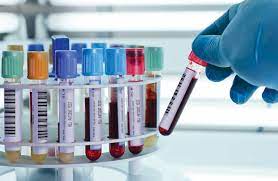Introduction
Biospecimen sampling has developed as a critical feature in the ever-evolving environment of clinical research, driving advances in precise medicine and pharmaceutical development. This article dives into the relevance of biospecimen sampling in clinical trials, examining its types, problems, best practices, and the revolutionary role it plays in drug discovery.
Types of Biospecimens
Blood Samples
Blood, a rich source of biomarkers, provides crucial insights into the physiological state of an individual. Examining blood components aids in understanding disease progression and evaluating treatment responses.
Tissue Samples
Tissue biopsies offer a detailed analysis of specific organs, enabling researchers to study cellular structures, identify genetic mutations, and comprehend the intricacies of diseases at a molecular level.
Urine and Saliva Samples
Non-invasive biospecimens like urine and saliva are gaining prominence due to their ease of collection. These samples are particularly valuable in monitoring long-term treatment effects and biomarker identification.
Significance in Clinical Research
Biospecimen sampling is critical for identifying biomarkers that can guide targeted therapy. It is crucial in the field of personalized medicine, to adapt therapies to an individual’s specific biological characteristics.
- Challenges in Biospecimen Sampling
Ethical Considerations
Balancing the need for biospecimens with ethical concerns is a perpetual challenge. This section explores the ethical considerations surrounding biospecimen collection and the importance of respecting participants’ autonomy.
Logistics and Storage
Ensuring the integrity of biospecimens during transportation and storage poses logistical challenges. The article addresses how proper logistics and storage solutions can mitigate these challenges.
Best Practices for Biospecimen Sampling
Standard Operating Procedures
Implementing standardized protocols for biospecimen collection is imperative to ensure consistency and reliability in research findings. This section outlines the best practices in developing and adhering to robust standard operating procedures.
Quality Control Measures
Maintaining the quality of biospecimens throughout the sampling process is essential. The article discusses the importance of stringent quality control measures to uphold the integrity of collected samples.
Role of Biospecimens in Drug Development
Efficacy and Safety Assessment
Biospecimens play a crucial role in assessing the efficacy and safety of potential drugs. Researchers rely on these samples to evaluate the impact of interventions at the molecular level, informing decisions in drug development.
Targeted Therapies
Advancements in biospecimen analysis contribute to the development of targeted therapies. This section explores how biospecimens aid in identifying patient subgroups that respond optimally to specific treatments.
Innovations in Biospecimen Collection
Liquid Biopsies
The advent of liquid biopsies revolutionizes biospecimen collection, offering a minimally invasive approach. This section discusses the potential of liquid biopsies in monitoring treatment responses and detecting genetic alterations.
Remote Sampling Technologies
Technological innovations enable remote biospecimen sampling, reducing the burden on participants. The article explores the impact of remote sampling technologies on the efficiency and inclusivity of clinical trials.
Regulatory Guidelines
FDA Regulations
Navigating regulatory frameworks is paramount in biospecimen sampling. This section provides insights into the FDA regulations governing biospecimen collection and emphasizes compliance for ethical and legal research practices.
International Standards
Global collaborations necessitate adherence to international standards. The article discusses the importance of aligning biospecimen sampling practices with global guidelines to ensure the validity and comparability of research outcomes.
Ensuring Patient Consent
Informed Consent Protocols
Respecting participants’ autonomy involves transparent communication about biospecimen usage. This section outlines the elements of informed consent protocols, emphasizing the importance of clear and comprehensive communication.
Privacy Protection
Addressing concerns related to privacy is essential in biospecimen sampling. The article discusses strategies to protect participant privacy and build trust in the research community.
Future Trends in Biospecimen Sampling
Integration of Artificial Intelligence
The integration of artificial intelligence enhances biospecimen analysis, offering more precise insights. This section explores how AI contributes to the interpretation of complex data and identifies patterns for better decision-making.
Continuous Monitoring
Advancements in biosensor technologies facilitate continuous monitoring of biospecimens. The article highlights the potential of real-time data collection in providing a comprehensive understanding of disease dynamics.
Success Stories
Impactful Clinical Trials
Highlighting success stories where biospecimen sampling played a pivotal role in groundbreaking clinical trials. Real-world examples demonstrate the tangible impact of biospecimen-driven research on medical advancements.
The Future of Precision Medicine
Tailoring Treatments
The future of precision medicine lies in tailoring treatments based on individual characteristics. This section explores how biospecimens pave the way for personalized therapeutic approaches, optimizing patient outcomes.
Advancements in Genomics
The integration of genomics with biospecimen analysis propels the understanding of genetic factors influencing disease susceptibility. This article discusses the transformative potential of combining genomics and biospecimens in advancing medical knowledge.
Overcoming Public Skepticism
Transparency in Research
Addressing public skepticism requires transparent communication about the benefits and ethical considerations of biospecimen sampling. This section explores effective strategies for fostering public trust in clinical research.
Communication Strategies
Effective communication plays a vital role in overcoming skepticism. The article discusses communication strategies to bridge the gap between the scientific community and the public, fostering understanding and support.
Conclusion
Finally, biospecimen sampling is a pillar in current clinical research, providing legendary insights into disorders and influencing the development of new medications. This article discusses the many facets of biospecimen sampling, from ethical considerations to technological advances.



